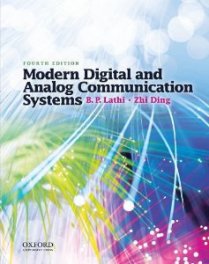Mixing Secrets for the Small Studio by Mike Senior reveals how you can achieve release-quality mixes even in the smallest studios by applying power-consumer techniques from the world's most profitable producers. This book is a down-to-earth primer for small-studio lovers who need chart-ready sonics in a hurry.
Drawing on the again-room methods of more than 100 famous names, this entertaining guide leads you step-by-step by means of the complete mixing process. On the way in which, you'll unravel the mysteries of each type of mix processing, from simple EQ and compression by means of to advanced spectral dynamics and "fairy mud" effects. Consumer-friendly explanations introduce technical concepts on a strictly need-to-know basis, whereas chapter summaries and assignments are good for college and college use.
You possibly can learn the refined modifying, association, and monitoring techniques which give industry insiders their competitive edge, and master the psychological tricks which defend you from all the most important rookie mistakes. You can find out the place you needn't spend cash, as well as tips on how to make a limited budget really count.
The emphasis may be very a lot on mastering the proper approaches and techniques, fairly than the right way to use any specific tools or software program, and the whole lot is described in resembling way as to make it simply transferable throughout any DAW platform and even to a standard console-based combine environment.. The book is structured in a progressive style, following a logical mixing workflow, and growing and building on concepts and techniques throughout.
The book could be very readable, in Mike's familiar, approachable and sometimes humorous type, and with plenty of illustrations, all of which keep the curiosity from cover to cover. The text also expands on Mike's own wealth of expertise and knowledge with numerous related quotes and opinions from over 100 of the world's greatest-identified engineers and producers.
This book contains 20 chapters grouped into four most important sections covering hearing and listening, combine preparation, balancing, and sweetening. Usefully, every chapter concludes with a ‘Lower to the Chase’ part summarizing the key techniques and ‘secrets’, along with an ‘Project’ part detailing sensible workouts to hone new-found skills. Acceptable audio material can be downloaded from a dedicated section of Mike’s own firm net site with numerous illustrative audio information, links to recommended software program and different sources, and - most impressively - a wide variety of excessive-quality bespoke multitrack material to enable readers to practice and develop their mixing expertise and processing techniques.
Part 1 of Mixing Secrets begins with a detailed discussion across four chapters on how to decide on and use nearfield monitoring, including understanding and working around the limitations of price range gear, optimizing the listening atmosphere, and ‘self calibration’ utilizing industrial music reference material. Essential pre-combine groundwork is covered in three chapters via Part 2, dealing with timing, tuning and association issues.
The main meat of the book is contained in Part 3, where eight chapters cover the nitty-gritty of compression, equalization, side-chains and the basic art of balancing. The emphasis throughout is at all times on applying these powerful tools to deal with specific recognized mix issues, and using them skillfully. Nevertheless, Mike also enjoys describing some particularly elaborate and advanced functions, often using sophisticated aspect-chain processing - but at all times to attain a worthy finish goal!
The ultimate part comprises five chapters dealing with combine sweetening techniques, including the application of reverbs and delays, stereo processing and other effects, bus compression, and the use of mix automation. The book concludes with a few appendices detailing his quote references and offering a thorough discography.
More details about this book...
or
Download Mixing Secrets for the Small Studio PDF Ebook :


































